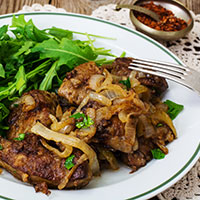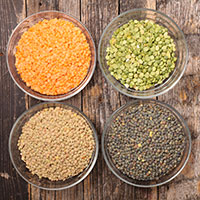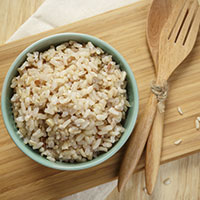| Vitamin name |
Vitamin B5 |
| What’s it used for? | Forms part of co-enzyme A, aids release of the stress hormone cortisone, releases energy from carbohydrates and fats, supports production of key brain neurotransmitters |
| Best food sources | Highest in organ meats, milk, fish, poultry, wholegrains, sweet potatoes, and green leafy vegetables |
| How much do I need? | NRV is 6 mg per day* |
| Need to know | Vitamin B5 is known as the ‘anti-stress’ vitamin because of its key role in adrenal hormone production |
*A Nutrient Reference Value or NRV is the recommended level set by the UK Department of Health for daily nutrient intake
Vitamin B5
Vitamin B5 is also known as pantothenic acid, named after the Greek word ‘pantos’ meaning ‘everywhere’. This is because vitamin B5 is widely available in foods. It is often found as calcium pantothenate in food supplements. Additionally, some vitamin B5 is produced by the gut bacteria.
Why do I need it?
The main action of vitamin B5 is in the support of adrenal or stress functions in the body. This is carried out by something called co-enzyme A which also helps to utilise carbohydrates and fats for energy production. Pantethine, the active form of pantothenic acid, also helps reduce cholesterol and blood fat levels.
Vitamin B5 is also key in the production of acetylcholine, a very important brain neurotransmitter involved in the body’s signalling functions. It can also be very useful for people suffering from skin complaints such as acne, psoriasis and allergies.
Although some vitamin B5 is produced by the good gut bacteria that’s naturally present in the intestinal tract, it can often be destroyed or reduced by a course of antibiotics. It is sometimes lacking in people who have a highly refined diet – one that is one high in sugar, white bread, convenience foods and pastries; this is the same as with other B vitamins.
Best food sources
Vitamin B5 is available in both animal and plant sources particularly liver, as well as legumes, wholegrains and green leafy vegetables.
Foods high in vitamin B5

Brewer’s Yeast – 12 mg per 100g

Calf liver – 8 mg per 100g

Split peas – 2 mg per 100g

Lentils – 1.4 mg per 100g

Brown rice – 1.1 mg per 100g
Are you getting enough?
Deficiency symptoms are rare because of its wide availability in foods but fatigue, depression, tingling of the hands and feet, insomnia and digestive upsets can be signs that you are lacking vitamin B5.
Teenagers are much more likely to experience deficiency symptoms due to their highly refined diets. And because teenagers are more likely to suffer from acne, high dosages of vitamin B5 can often be very effective.
Did you know?
Vitamin B5 has been found to be useful to people suffering from rheumatoid arthritisHigh dosages of up to 500mg of pantothenic acid can safely be taken to reduce cholesterol levels
Vitamin B5 is safe to take during pregnancy and breast feeding at the recommended dosages – consult your healthcare professional for advice
For all the latest research on vitamin B5 click here
Try this
Vitamin B5 is found in the Alive! range of multi vitamins and minerals.
For more information visit www.feelaliveuk.com
You can also follow Alive! on Twitter for general health and wellbeing tips: @feelaliveuk






